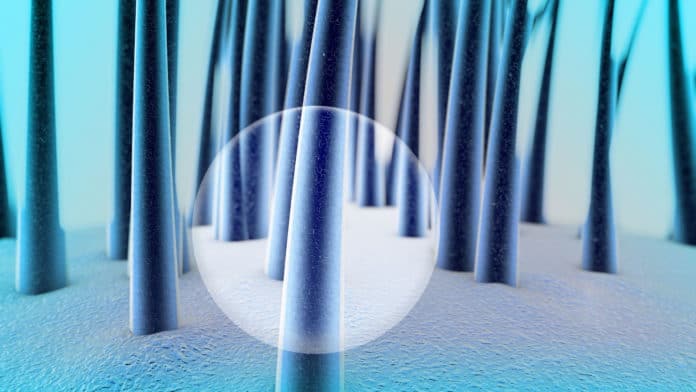Scientists at the University of California, Irvine, have discovered a signaling molecule to stimulate hair growth. The molecule called SCUBE3 is naturally produced by dermal papilla cells. It acts as the messenger that tells the neighboring hair stem cells to start dividing, which heralds the onset of new hair growth.
The discovery may offer treatment for androgenetic alopecia, a common form of hair loss in both women and men.
Scientists have already known that dermal papilla cells play a vital role in controlling hair growth. However, the genetic basis of the activating molecules involved remained poorly understood. Scientists determined how dermal papilla cells promote new growth in this new study.
Maksim Plikus, Ph.D., UCI professor of developmental & cell biology and the study’s corresponding author, said, “At different times during the hair follicle life cycle, the same dermal papilla cells can send signals that either keep follicles dormant or trigger new hair growth. We revealed that the SCUBE3 signaling molecule, which dermal papilla cells produce naturally, is the messenger used to ‘tell’ the neighboring hair stem cells to start dividing, which heralds the onset of new hair growth.”
The dermal papilla cells must produce activating molecules for mice and humans to develop hair effectively. Dermal papilla cells malfunction in persons with androgenetic alopecia, drastically reducing the typically plentiful activating chemicals. This study created a mouse model with abundant hair and hyperactivated dermal papilla cells. This model will help scientists learn more about the regulation of hair growth.
Co-first author Yingzi Liu, a UCI postdoctoral scientist in developmental & cell biology, said, “Studying this mouse model permitted us to identify SCUBE3 as the previously unknown signaling molecule that can drive excessive hair growth.”
Experiments demonstrated that SCUBE3 activates hair growth in human follicles. Scientists microinjected SCUBE3 into mouse skin where human scalp follicles had been transplanted, inducing new growth in the dormant human and surrounding mouse follicles.
Co-first author Christian Guerrero-Juarez, a UCI postdoctoral researcher in mathematics, said, “These experiments provide proof-of-principle data that SCUBE3 or derived molecules can be a promising therapeutic for hair loss.”
Plikus said, “There is a strong need for new, effective hair loss medicines, and naturally occurring compounds normally used by the dermal papilla cells present ideal next-generation candidates for treatment. Our test in the human hair transplant model validates the preclinical potential of SCUBE3.”
Journal Reference:
- Yingzi Liu et al. Hedgehog signaling reprograms hair follicle niche fibroblasts to a hyper-activated state. Cell Stem Cell, 2022. DOI: 10.1016/j.devcel.2022.06.005
